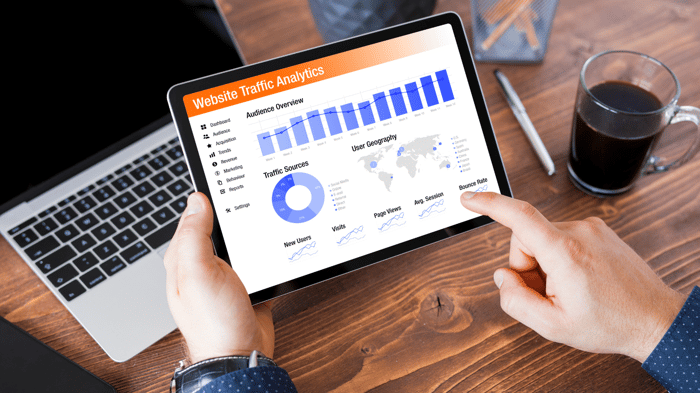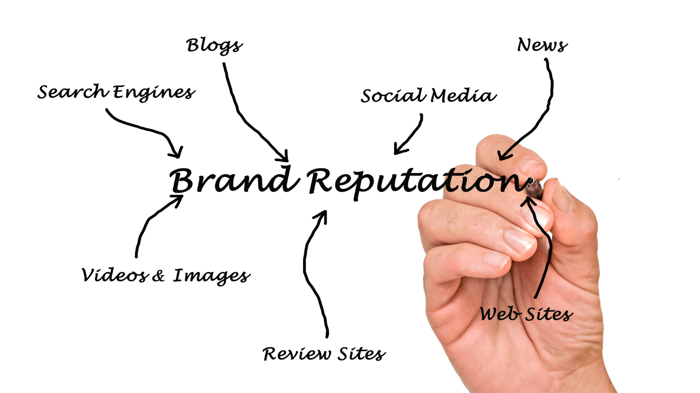In today's world, where the majority of businesses are moving online, search engine optimization (SEO) has become more important than ever before. SEO is a critical factor in determining the online visibility and success of any business. Our data shows that 1/3 of our customers' leads come from SEO. When we onboard some clients, we often start way lower than that. If a prospect searches for a keyword, or sequence of keywords, they may find their competitors. Being on page two or more of a "Google" search means that 92% of the viewers won't even see them as they don't go further than page one. Here are six steps that highlight the importance of SEO:

Table of Contents:
- Increased Traffic
- Cost-Effective Marketing
- Improved User Experience (UX)
- Increased Credibility
- Competitive Edge
- Long-Term Benefits to Your Business
1. Increased Traffic

SEO helps to increase traffic to your website by making it more visible to search engines. When your website appears on the first page of search engine results, it is more likely to be clicked on by users searching for relevant keywords. This increased traffic can lead to more leads, conversions, and ultimately, sales.
2. Cost-Effective Marketing

SEO is also a cost-effective marketing strategy for businesses of all sizes. Unlike traditional marketing methods, which can be expensive and not always effective, SEO offers a high return on investment (ROI). By targeting specific keywords and optimizing your website for search engines, you can drive targeted traffic to your site without spending a lot of money on advertising. The traffic would come to your site organically by using the targeted keywords.
3. Improved User Experience (UX)

SEO involves optimizing your website's content, structure, and design to provide a better user experience. This includes making your website easy to navigate, fast-loading, and mobile-friendly. By providing a positive user experience, you can improve the chances of users staying on your website, engaging with your content, and converting into customers.
Ways to improve the user experience from the technical side include:
-
Title tags: The title tag is an essential HTML element that displays the title of a web page in search results and browser tabs. It's important to have unique, descriptive, and keyword-optimized title tags for each page on your website to help users and search engines understand the content. Keep title tags within 50-60 characters to ensure they're fully displayed on search engine results pages (SERPs).
-
Meta Descriptions: Meta descriptions are short snippets that summarize the content of a web page. They appear below the title tag in search results and can influence click-through rates. While not a direct ranking factor, a well-crafted meta description can improve user experience and drive traffic. Aim for 150-160 characters and include relevant keywords to optimize your meta descriptions.
-
Header Tags: Header tags are used to structure your content and signify the hierarchy of headings and subheadings. The H1 tag should be reserved for the main heading, with H2, H3, and so on, used for subheadings. Properly structured header tags make it easier for search engines to understand and index your content, while also improving readability for users.
-
Image Alt Attributes: Search engines can't "see" images the way humans do, so they rely on alt attributes to understand the content of an image. Including descriptive, keyword-rich alt text for your images not only improves accessibility for visually impaired users but also helps search engines index and rank your content. Keep alt attributes concise and relevant to the image.
- Schema Markup: Schema markup, also known as structured data, is a semantic vocabulary that helps search engines understand the context and meaning of your content. Implementing schema markup can lead to rich snippets, which can improve click-through rates and visibility in SERPs. Some common schema types include organization, product, event, and local business.
- Canonical Tags: Duplicate content can be detrimental to your SEO efforts, as search engines may not know which version to index and rank. Canonical tags address this issue by specifying the preferred version of a URL. Adding a rel="canonical" link element to the head section of a page informs search engines which version should be considered the "original" and given priority in search rankings.
- Robots Meta Tags and X-Robots-Tag: Robots meta tags and X-Robots-Tag HTTP headers allow you to control how search engines crawl and index your content. You can instruct search engines not to index a particular page, follow or not follow links on a page, or prevent specific elements like images from being indexed. Use these tags wisely to ensure only relevant and valuable content is indexed.
4. Increased Credibility

When your website ranks higher in search results, it increases your credibility and authority in the eyes of users. This is because users tend to trust search engines and assume that the websites ranking higher are more reputable and trustworthy. By improving your website's SEO, you can improve your brand's reputation and credibility, leading to increased brand awareness and loyalty.
5. Competitive Edge

In today's highly competitive digital landscape, SEO can give you a competitive edge over your competitors. By optimizing your website, you can outrank your competitors in search results, making it easier for potential customers to find and choose your website over theirs. This can lead to increased market share and revenue for your business.
6. Long-Term Benefits to Your Business

Finally, SEO offers long-term benefits to your business. Unlike other marketing strategies that offer short-term benefits, SEO provides long-lasting results. Once you have optimized your website for search engines, you can continue to benefit from increased visibility, targeted traffic, and brand awareness for years to increase sales and awareness for your company.
Do you want to learn more about SEO? Schedule a meeting with our Vice President of Business Development Bill Padnos using the calendar below!